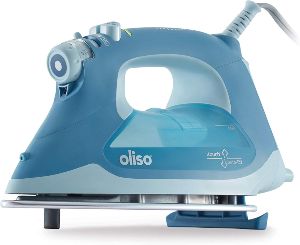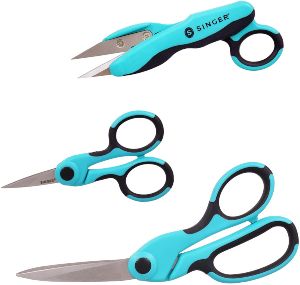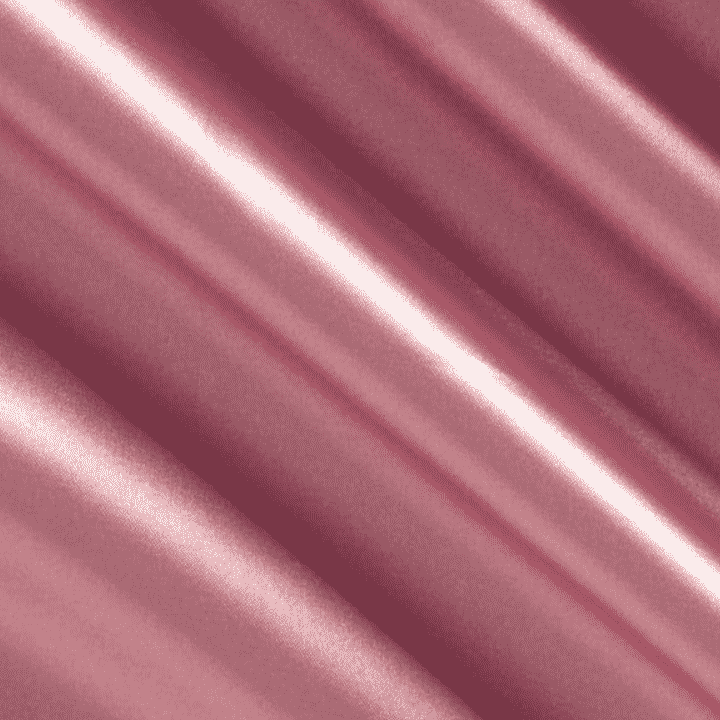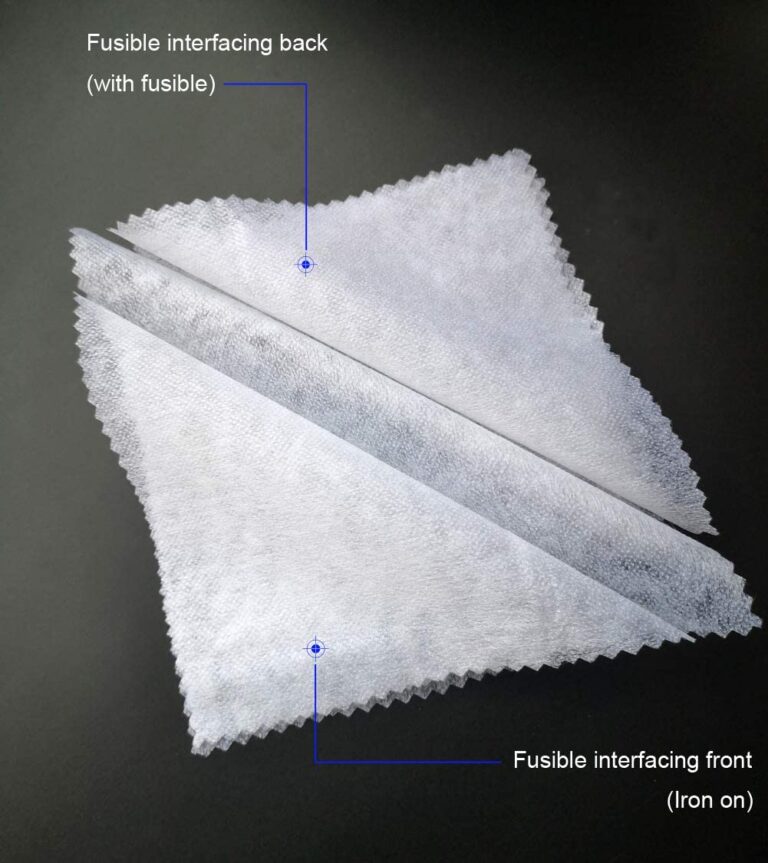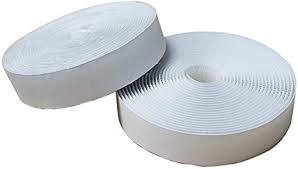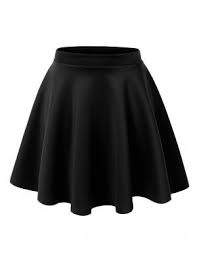30 Beginners Sewing Mistakes You Need To Avoid
What are the 30 top beginners sewing mistakes you need to avoid? If you want to learn how to sew, one of the first steps to achieving your goals is to learn the do’s and don’ts of sewing practices.

The truth is that learning how to sew should not be a herculean task if you follow the right steps. Your route to success depends on your ability to master the art with patience and consistency.
You can teach yourself to sew or learn from a master needleworker; It doesn’t matter how you learn but what matters most is that you avoid mistakes that will frustrate your goals.
Here is my review of the top 30 beginners’ sewing mistakes to avoid.
Table of Contents
- 1 30 Beginners Sewing Mistakes You Need to Avoid
- 1.1 1.Buying an expensive sewing machine
- 1.2 2.The wrong type of needle
- 1.3 3.Using the same needle for hours or days
- 1.4 4. Failure to finish seams– a Beginners Sewing Mistake You Need to Avoid
- 1.5 5. Not ironing seams or using inappropriate heat settings-30 Beginners Sewing Mistakes You Need to Avoid
- 1.6 6.Using the wrong fabric for the wrong project
- 1.7 7.Cutting paper with your sewing scissors
- 1.8 8. Using a size chart instead of taking measurements
- 1.9 9. Failure to wash before you use
- 1.10 10. Leaving your machine unkempt
- 1.11 11. Starting with a hard project
- 1.12 12. Starting multiple projects at the same time
- 1.13 13. Using the wrong tools/material
- 1.14 14. Taking measurements incorrectly– 30 Beginners Sewing Mistakes You Need to Avoid
- 1.15 15. Buying too many fabrics
- 1.16 16. Choosing patterns based on your ready to wear size-30 Beginners Sewing Mistakes You Need to Avoid
- 1.17 17. Picking patterns that require significant alterations
- 1.18 18. Picking patterns meant for experienced sewers-30 Beginners Sewing Mistakes You Need to Avoid
- 1.19 19. Ignoring or reading a sewing pattern incorrectly
- 1.20 20. Ignoring fabric suggestions
- 1.21 21. Turning the Handwheel of the Sewing Machine backward-30 Beginners Sewing Mistakes You Need to Avoid
- 1.22 22. Leaving the machine uncovered
- 1.23 23. Forcefully pulling out stuck fabric
- 1.24 24. Failure to wash stretchy fabrics-30 Beginners Sewing Mistakes You Need to Avoid
- 1.25 25. Adding more inches than necessary
- 1.26 26. Failure to oil pedal joints
- 1.27 27. Failure to oil the needle plate
- 1.28 28. Not tightening the needle clamp
- 1.29 29. Using the wrong needles size
- 1.30 30. Ignoring the length regulator
- 1.31 Final Thoughts
30 Beginners Sewing Mistakes You Need to Avoid
1.Buying an expensive sewing machine
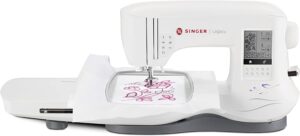
The first mistake you want to look at is one that most of us have made, especially at the early stage – buying an expensive machine. So you’ve decided to take up sewing as a hobby, and you are excited because you have these wonderful fashion ideas you would like to implement.
In a bid to get a very good machine, you end up buying an expensive machine you don’t need.
No matter how expensive a sewing machine is, if it has high-tech features that you can’t operate because you lack the user experience, it is as good as useless. While there is nothing wrong with buying a very good machine, looks and style should not take precedence over durability and functionality.
What you need is not the best sewing machine, but a machine that is easy to operate with easy controls, not complex ones.
2.The wrong type of needle
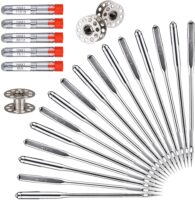
Just like you use needles to stitch clothes, sewing machines rely on needles to do the same. One common mistake beginners make is using the wrong type of needles for their machines. Some needles are thicker and best suited for heavier, tougher fabrics; others are slender and ideal for slim, delicate fabrics.
And just in case you didn’t know, the type of needle you use will determine just how well your clothes come out at the end of the day. So avoid using the wrong needles for the right fabrics.
Don’t be in a hurry to sew; compare the needle with the fabric and ensure it is the right fit before you start sewing if you want to avoid beginner’s sewing mistakes.
3.Using the same needle for hours or days
The standard sewing practice among professionals is to change the machine needle every eight hours, and there are reasons for this. Even though the needle still appears sharp, repeated use blunts the tip, especially when sewing thick fabrics.
Consider needles as you would look at knives.
So the more you use a sharp knife, the more you will notice that at some point, it no longer cuts seamlessly; the same is the case with needles. The good news is that needles are inexpensive, so replacing old ones with new ones won’t cost much.
So make it a practice to change your sewing needles after every project before you start sewing.
4. Failure to finish seams– a Beginners Sewing Mistake You Need to Avoid
Seams are finished by either covering the edges with bias tapes or stitching, such as by a serger. These methods prevent the fabric from splitting and tearing. Also, they give the dress a neat appearance.
So don’t be in a hurry to complete a project by failing to finish the seams.
5. Not ironing seams or using inappropriate heat settings-30 Beginners Sewing Mistakes You Need to Avoid
Not ironing seams as you work is as bad as not doing the seams at all. When you heat press the seam, it becomes flat as the heat merges the crumbled fabric together for a smoother appearance. This allows you to know which of the parts to work on.
The heat setting you use matters a great deal. But many beginners don’t know which settings to use.
Do you use low, medium, or high heat? The answer to this is the latter. High heat is best for ironing very thick fabrics, but for light ones, it may melt the fabric. For thin fabrics, low heat is better, but for fabrics that are neither too thick nor too light, you can use medium heat.
6.Using the wrong fabric for the wrong project
One of the biggest challenges for beginners is choosing the wrong fabric. This is quite common for two reasons. First, a lack of experience, and secondly, there are so many fabrics on the market that choosing the right one for the right project can be tricky.
When picking a fabric, the first question you want to ask is whether the fabric is durable and will withstand frequent washing. The second is the weather, and the third, your style.
However, we still recommend going for durable fabrics regardless of the other considerations because you want fabrics that will stand the test of time. Synthetic fibers or fabrics with fine thread are ideal options, so be sure you learn about the different fabrics available on the market before you start sewing.
7.Cutting paper with your sewing scissors
This may seem like a harmless thing to do, but it is not, which is why it is one of the beginners sewing mistakes many of us have made as we practice our craft. Sewing scissors are also the go-to tool in the house for anyone who wants to cut just about anything that isn’t solid. Paper dulls scissors’ sharpness faster than fabrics.
While it is true that regular fabric use will eventually dull the blades, paper will hasten the decline, so avoid cutting paper with this work tool. Don’t allow any member of your household to use them either.
8. Using a size chart instead of taking measurements
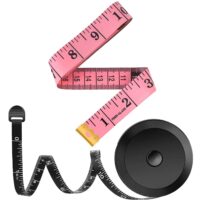
Size charts are helpful, but they are only meant to serve as guides and not replace measurements. When making custom dresses, nothing beats the accuracy of actually measuring yourself or the person you are sewing for.
Remember that we all have different body sizes as humans, so relying on size charts when we can use the old school method of doing the measurement by hand is a bit foolhardy. You may not be a size 36-24-36, so taking the measurement is the ideal approach.
Moreover, we add and gain weight almost every week in small proportions, even if we don’t take notice. But when you use a measuring tape, you will get a perfect fit.
9. Failure to wash before you use
Many people fail to wash the fabric before they sew it, which is not a healthy approach. This is because most fabrics you buy from store shelves still have chemical residue that may harm your health. Moreover, some chemicals cause shrinkage, which may reduce the quality of your outfit after you are done. So make it a habit to wash before you start sewing, not after.
10. Leaving your machine unkempt
Your sewing machine needs to be cleaned at all times to run smoothly. If you only touch it when you want to use it but abandon it for days, weeks, or months, you are simply exposing it to hasty wear and tear. As you see, fibers from the fabric build up under the needle and bobbing area, which may eventually cause clumping.
Engine parts that require oil for lubrication also have to be oiled for their moving parts to work effectively. So never leave your machine unkempt. Always clean it at regular intervals and oil parts that require oiling.
11. Starting with a hard project
Starting with a hard project is not a smart move to make. If you want to stay motivated and wish to improve continuously, the last thing you want is to start with a difficult style you will fail at, as these failures can discourage you.
Every professional you know started with simple styles; then worked their way up to more complex ones. You should follow the same approach. Start with easy tops to sew for beginners. The more you practice, the better you will become at the more complex ones. So take things easy in the beginning. Start easy, not hard.
12. Starting multiple projects at the same time
When you first get started, it is normal to be excited and want to see different garments at once. You have your sewing machine and fabrics in place, so nothing is holding you back, right? Well, you might be wrong.
As a beginner, you lack the skill level to handle different projects at the same time, and if you are not careful, you will ruin your fabrics by leaving them halfway finished, lose motivation, and interest in continuing.
To be honest, this is one mistake you are likely to make, but believe us when we say that you will learn from it eventually. So, it is always advisable to start one project and finish it before moving to a new one.
13. Using the wrong tools/material
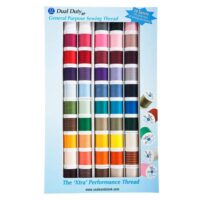
Sewing requires quite a few tools besides the machine. The needles, scissors, threads, bias tape, and any other tools or materials you may need, are the keys to making a great-looking dress. There are two things to avoid in this regard. The first is to avoid buying expensive materials because you want the best.
Remember that you are still a beginner, so you don’t need anything too fancy. You can do that in the near future. The second one is trying to save money by buying substandard items. If you buy substandard items, you will either have to replace them not too long after, or they may ruin your outfit.
If you don’t know the right items to buy, ask an experienced person for help.
14. Taking measurements incorrectly– 30 Beginners Sewing Mistakes You Need to Avoid
Mistakes don’t get much worse than this. One common beginner sewing mistake is sewing the clothes too tight or too loose, which is caused by incorrect measurements. Oftentimes, we do this because we have no choice, and there is no one in the house who can measure us. However, taking your measurements yourself is a bad idea for the following reasons.
Firstly, it will be hard to do it correctly because your hands can’t get around your body or down your lower region accurately. Secondly, you are emotionally tied to the outcome, so you may consciously or unconsciously measure yourself incorrectly.
But if you have someone else do it, you avoid these unfavorable outcomes. Remember that taking the wrong measurements is a recipe for disaster. If you get this wrong, every other thing will go downhill from there.
So as a beginner, it pays to have someone do it for you, but once you become experienced, you should be able to do it perfectly. Creating the best sewing outcome involves patience and practice, not just having the best sewing machine for beginners.
15. Buying too many fabrics
As a beginner, don’t let the excitement get the better of you; otherwise, you will buy more fabric that you may not even need or use. With so many sellers offering their products at discounted prices, you may be tempted to want to buy something cheap when you don’t have to buy it at all.
So don’t stash your home with fabrics that will eventually clutter your living space. Buy only what you need for a project, and as you get better, you can then buy as many fabrics as you want.
16. Choosing patterns based on your ready to wear size-30 Beginners Sewing Mistakes You Need to Avoid
Many beginners confuse the ready-to-wear sizes of the fashion industry and custom sewing. Both are not the same. For instance, if you wear a ready-to-wear size 18W, you may most likely have to buy a much larger pattern size for sewing.
If you go for a lower or higher size, your outfit will not fit you perfectly, and you will begin to feel that you made a mistake with your measurements, but that’s not the case. The reason is that the industry uses a much different sizing standard. So rather than focus on the sizing, we recommend focusing on the measurement instead.
For ladies’ outfits, consider buying patterns according to your bust for dresses, tops, and jackets. For pants or skirts, focus your measurements on the hips since you can alter the waist to suit your exact frame. You will likely make some mistakes along the way, but with time, you will master the right patterns to buy. These and more are essential sewing tips for beginners to bear in mind.
17. Picking patterns that require significant alterations
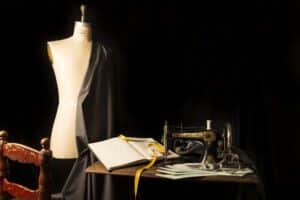
Another headache for beginners is picking patterns that require significant adjustments. While this should not be a problem for experienced people, beginners will struggle to complete a project with complicated patterns that require significant modifications.
When starting out, the last thing you want is to work with patterns that will take you significant effort to pull off. You want something that is simple and relatively straightforward so avoid such projects. The key is to improve slowly but surely with each passing day, and as you get better at sewing, you can then go for complex patterns that require more expertise to alter.
18. Picking patterns meant for experienced sewers-30 Beginners Sewing Mistakes You Need to Avoid
While we are on patterns, picking a pattern meant for intermediate or experienced sewers is not a good idea. Just because you like a pattern doesn’t mean you should start with that. Pick what you can sew, not what you like, since you are still in the learning phase.
Some patterns are meant for sewers with a little experience, while others are meant for advanced sewers or beginners. As a beginner, start with patterns for beginners and master them first.
The good thing about the internet is that there are so many videos, blogs, and materials dedicated to teaching beginners how to master the art of sewing. Some of them recommend patterns for beginners so you can learn how to pick the right pattern.
19. Ignoring or reading a sewing pattern incorrectly

Picking the wrong pattern is bad; picking one that is too complex as a beginner is not a smart idea but picking the right one and reading it incorrectly is equally as bad. Note that when reading patterns, every label or Symbol means something. You will see things like
- Fold lines
- Grainline
- Shorten/lengthen lines
- Finished measurements.
All these measurements have numbers that mean something, so if you read them wrongly, your sewing will not come out well. However, reading patterns are not as hard as you think. If you go on Google, you will find blogs and videos that provide examples of easy tops to sew for beginners. So take your time.
20. Ignoring fabric suggestions
So you’ve seen a pattern you want to try out, and the author has suggested some fabrics to use. Rather than using any of them, you decide to use a fabric you want. If you go this route, you may end up with an unfavorable outcome.
The author and designers recommend certain fabrics for certain patterns for a good reason. It may be that the fabric is the best fit for that pattern, or that they are easy tops to sew for beginners. Ignoring the suggestions may lead to fabric wastage or taking patterns you cannot sew for now since you are still a beginner.
21. Turning the Handwheel of the Sewing Machine backward-30 Beginners Sewing Mistakes You Need to Avoid
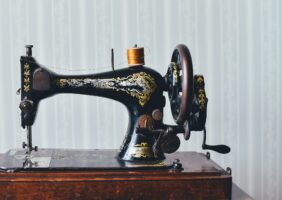
Sewing machines are not complicated devices, but they may appear to be if you have limited experience when it comes to operating one. Most, if not all, machines that have handwheels are designed to be turned forward, not backward or in the opposite direction. Handwheels come into play anytime you want to lift the needle, and they turn forward and should remain so until you are done.
As for computerized machines, their turners are turned upwards so users can easily fit the needle, but there are others that don’t use a turner at all. So before you start using a machine you just bought, take the time to read the user manual carefully to understand how best to use it. Using the machine wrongly may lead to damage, which is something you don’t really want.
22. Leaving the machine uncovered
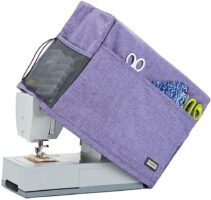
It is true that sewing machines are built with tough materials like cast iron, steel, and aluminum. However, exposing it to the weather and dust if it is not used is a recipe for disaster.
While the exterior is weather-resistant, the interior has fragile moving parts. Failure to cover the machine with durable materials will expose it to dust, which will get into the engine and cause damage. To protect your seeing machine and extend its shelf life, anytime you are not using it, make it a habit to cover it, even if it will only be out of action for a short time.
Most sewing machines come with covers that you can use. But if yours doesn’t come with one or the cover it came with is no longer useful, you can customize one for it or use thick fabric to cover it. Any strong piece of cloth will suffice as long as it covers the whole body.
23. Forcefully pulling out stuck fabric
Many of us are guilty of doing this, and it often boils down to frustration. Whenever you are sewing and the fabric gets stuck, the worst possible thing you can do is force it out. You need to understand that sewing machines come in different models, and some of them latch on to fabrics.
If you notice this has happened to your fabric, or you notice that the stitching is untidy, you may be tempted to force it out. Doing so is tantamount to forcing the machine to work, which may damage the motor or/and the feed dogs.
The best course of action in such a scenario is to take a step back and find out why the machine is acting this way.
It may be that there are too many fabric layers inside, and for non-heavy duty machines, this can be a problem. To resolve this problem permanently, you can buy a special device to install at the back of the foot presser. This device of often of the same height as the multilayers in the seam. This device will ensure that the machine continues to work just fine.
24. Failure to wash stretchy fabrics-30 Beginners Sewing Mistakes You Need to Avoid
In an earlier point, we addressed the failure to wash fabrics before they are sewn. Another beginner’s sewing mistake is an unwillingness to wash stretchy fabrics before you sew them. It is important to wash stretchy fabrics because they are very sensitive and tend to lose form when they are under stress.
You may see the fabric, and it looks perfect, only to wash it afterward, and the seam and fibers become loose and worn out. While it is advisable to wash any fabric before you sew it, it is even more important to do so if the fabric is stretchy. You don’t have to wash with soap; just water will suffice.
A slight tumble, then you dry. Lastly, ensure that you give slight allowances with your measurements so the outfit will not feel too tight when you are done sewing.
25. Adding more inches than necessary
We all made this mistake during the early days. Never assume sizes from memory, especially if you are sewing the dress for someone else. If it’s been a long time since you measured them, do so again before you sew their dress. One of the first rules of needlework is never to assume but to be sure of measurements by actually doing the measuring.
26. Failure to oil pedal joints
The remaining sewing mistakes we will focus on have to do with machine maintenance, and one huge mistake made by beginners is when they forget to oil the pedal joints because they seem to be working just fine.
You don’t have to wait until the pedal gets stiff before you know that something is wrong, and you must take action. If you use your machine often, always oil the pedal joints regularly. Common pedal oil products are wholly hydraulic oil or a mixture of hydraulic and other fluids.
If the joints remain oiled, the machine will continue to run smoothly.
27. Failure to oil the needle plate
Another part that needs oiling is the needle plate. If you don’t oil the plate, the feed dogs will stiffen over time due to the regular passage of threads through them. This will cause the thread to run slow because the feed dogs are not functioning fast enough. If you oil the plate regularly, the threads will run through smoothly
28. Not tightening the needle clamp
If you notice that your needles break all of a sudden, don’t be in a hurry to assume that the fabric you are sewing is too tough for it. It may be that the needle clamp is loose. Note that the faster the needle runs, the looser the clamp will become.
One sign that the clamp is loose is the sound you begin to hear as you sew. Before this becomes a regular occurrence, always tighten the clamps from time to time; otherwise, you will keep breaking and buying new needle packs every few weeks.
29. Using the wrong needles size
Not all needles will be good enough for your machine clamp. It’s one thing to always use the right needles for your fabrics, and another to use the right needles that fit the clamps.
If you use needles that are too big or too small for the clamps, this will lead to widening, and the clamps will loosen up. So we advise that you revert to your sewing machine manual when picking needles rather than rely on guesswork.
30. Ignoring the length regulator
Last but not least, is ignoring the length regulator or lever. One of the effects of a wrong lever is jumping seams. What do we mean by this?
You may notice that as you stitch fabrics, some seams will just run through unstitched. This occurs because the regulator is not of the right length. To fix this problem, you will have to regulate your machine to get more tension using the dial or lever.
If yours is a manual sewing machine, you will have to push the lever down or raise it. As for electric sewing machines, the dials are rolled backward or forward.
Final Thoughts
In this article, we have provided you with sewing tips for beginners and common mistakes. There are many beginner sewing mistakes you should know about, but we believe that we have explored thirty of the most notable ones.
If you commit these 30 Beginners Sewing Mistakes to Avoid to memory, you will not make them, and your sewing will be as stress-free as can be. Always ensure that you maintain your sewing machine regularly by oiling the plates and the pedal joints.
And more importantly, keep the sewing machine protected from dust by covering it with the cover it came with or a durable piece of cloth. Doing so will keep it protected and extend its lifespan.


